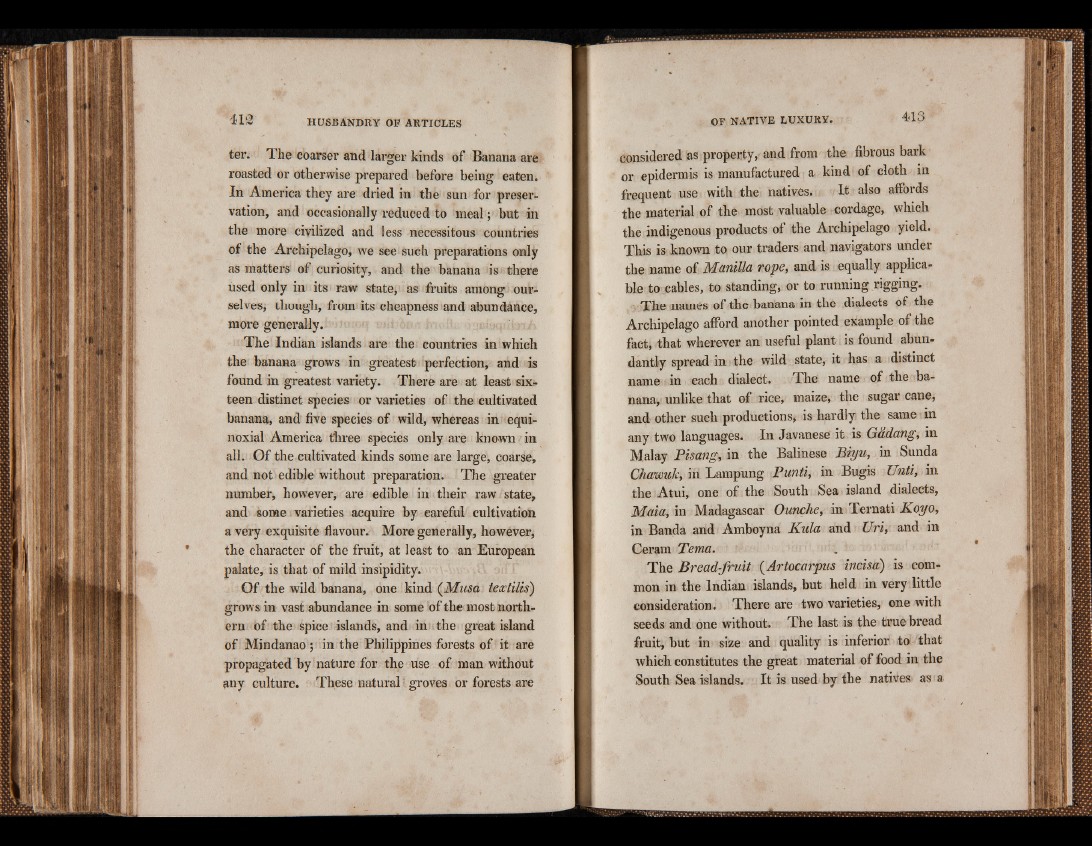
ter. The coarser and larger kinds of Banana are
roasted or otherwise prepared before being eaten.
In America they are dried in the sun for preservation,
and occasionally reduced to meal ; but in
the more civilized and less necessitous countries
of the Archipelago, we see such preparations only
as matters of curiosity, and the banana is there
used only in its raw state, as fruits among ourselves,
though, from its cheapness and abundance,
more generally.
The Indian islands are the countries in which
the banana grows in greatest perfection, and is
found in greatest variety. There are at least six!-
teen distinct species or varieties of the cultivated
banana, and five species of wild, whereas in équinoxial
America three species only are known in
all. Of the cultivated kinds some are large, coarse,
and not edible without preparation. The greater
number, however, are edible in their raw state,
and some varieties acquire by careful cultivation
a very exquisite flavour. More generally, however,
the character of the fruit, at least to an European
palate, is that of mild insipidity.
Of the wild banana, one kind (Musa tex tills)
grows in vast abundance in some of the most northern
of the spice islands, and in the great island
of Mindanao ; in the Philippines forests of it are
propagated by nature for the use of man without
any culture. These natural I groves or forests are
considered as property, and from the fibrous bark
or epidermis is manufactured a kind of cloth in
frequent use with the natives. It also affords
the material of the most valuable cordage, which
the indigenous products of the Archipelago yield.
This is known to our traders and navigators under
the name of Manilla rope, and is equally applicable
to cables, to standing, or to running rigging.
The names of the banana in the dialects of the
Archipelago afford another pointed example of the
fact, that wherever an useful plant is found abundantly
spread in the wild state, it has a distinct
name in each dialect. The name of the banana*
unlike that of rice, maize, the sugarcane,
and other such productions, is hardly the same in
any two languages. In Javanese it is Gadang, in
Malay Pisang, in the Balinese JBiyu, in Sunda
Cha'wuk, in Lampung Punti, in Bugis U?iti, in
the Atui, one of the South Sea island dialects,
Maiay in Madagascar Ounchet in Ternati Koyo,
in Banda and Amboyna Kula and Uri, and in
Ceram Tema.
The Bread-fruit ( Artocarpus incisa) is common
in the Indian islands, but held in very little
consideration. There are two varieties, one with
seeds and one without. The last is the true bread
fruit, but in size and quality is inferior to that
which constitutes the great material of food in the
South Sea islands. It is used by the natives as a